Roof vent leaks often come from cracked flashing, damaged caps, or deteriorated sealant, and should be repaired quickly to prevent costly water damage. Permanent fixes involve removing old sealant, resealing or replacing the vent, and securing it properly. Tarps or waterproof tape can serve as short-term solutions during bad weather. Annual inspections, debris removal, and keeping shingles flexible with roof restoration treatments like Roof Maxx can help prevent leaks from returning. Steep, high, or persistently leaky roofs are best worked on by professionals.
Your roof vents help keep your attic ventilated and prevent moisture buildup—but if they leak in the rain, they can become a liability. Any amount of water leaking through or around a roof vent should be dealt with as soon as possible to prevent damage and save you from needing to make costly repairs.
So what can you do about a leaky roof vent, and how can you prevent your vents from leaking next time it rains? Don’t worry; our team at Roof Maxx has spent years extending the lifespan of asphalt shingle rooftops, and we’re here to share some of our maintenance secrets with you.
In this guide, we’ll help you identify the source of the problem, provide a step-by-step repair process, and share tips for keeping your roof vents in great shape.
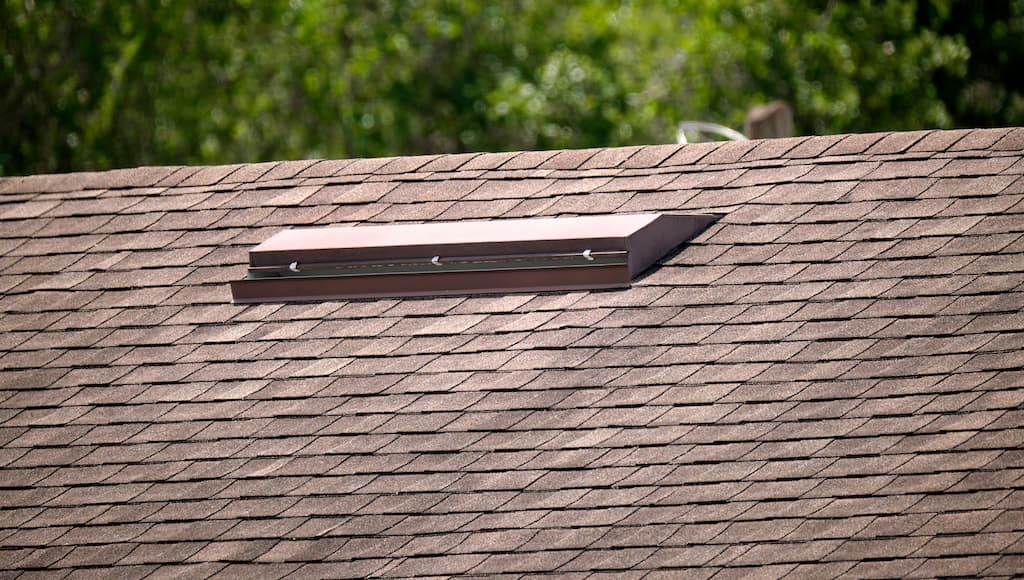
Roof Maxx isn’t designed to waterproof your shingles, but it can significantly enhance their flexibility and durability—qualities that are crucial for preventing certain types of roof damage.
While Roof Maxx won’t directly stop a roof vent from leaking, it can extend the lifespan of the asphalt shingles surrounding the vents. This helps homeowners protect their investment and reduce the likelihood of leaks caused by brittle or cracked shingles near vent openings.
Here’s how Roof Maxx can make a difference:
Applying Roof Maxx before significant wear occurs ensures your roof is better equipped to handle the stresses of weather and aging, reducing the chance of water intrusion around sensitive areas like roof vents.
Learn More: 4 Homes Before & After Roof Maxx
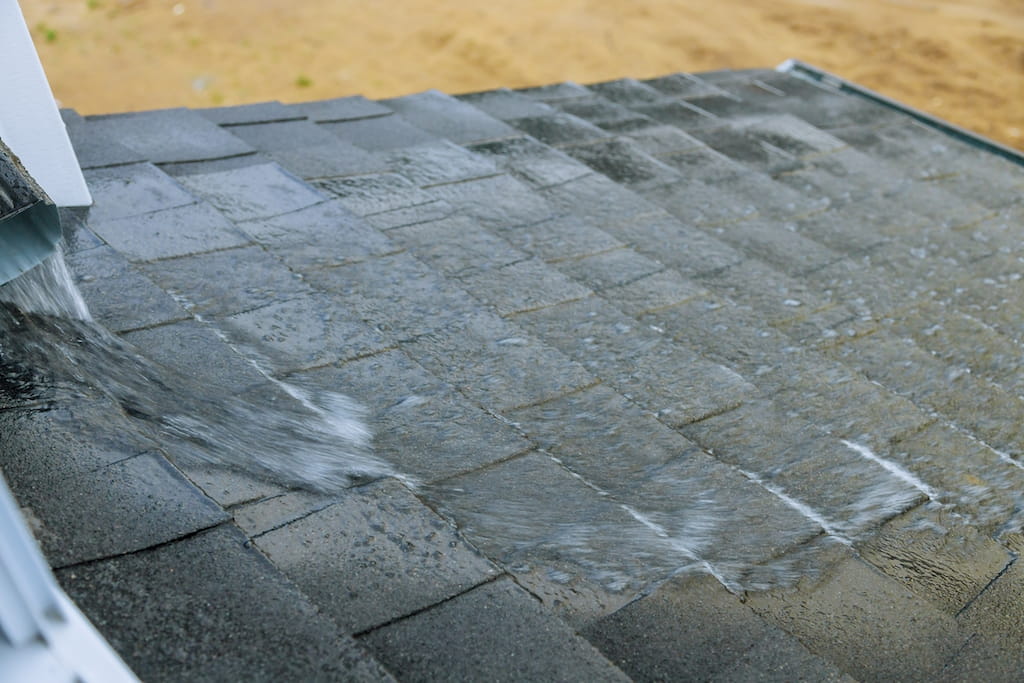
Many homes have more than one roof vent, and not all leaky vents are faulty in the same way. So before you can fix the issue, it’s important to determine where the leak is and what’s causing it.
Common problems with roof vents include:
Before doing anything else, you should inspect the area around your vent during or after rainfall to pinpoint where the water is coming in. Once you’ve identified the source, you’re ready to gather the tools and materials needed for the repair.
Learn More: Roof Fall Protection: How to Stay Safe While on Your Roof
While tackling a roof vent leak yourself can save money, it’s important to understand the potential risks of DIY roof repairs.
Here are a few reasons why hiring a professional is often the safer and more effective option:
If you’re confident in your ability and have experience with roof repairs, a DIY approach might work for minor issues. However, for more complex problems or significant leaks, hiring a professional is the best way to make sure the job is done safely and effectively.
To fix a leaking roof vent, gather the following items:
Having these tools on hand will make the repair process smoother and safer.
Working on a roof can be dangerous. If you do decide to try a DIY fix, make sure you follow these safety tips to minimize your risk:
And remember: if you’re not comfortable working on your rooftop or don’t have the necessary safety gear, don’t try! Instead, contact a professional roofer who can make sure the required repairs are performed safely and that your warranty isn’t voided.
Learn More: Will a Roof Maxx Treatment Void My Shingle Warranty?
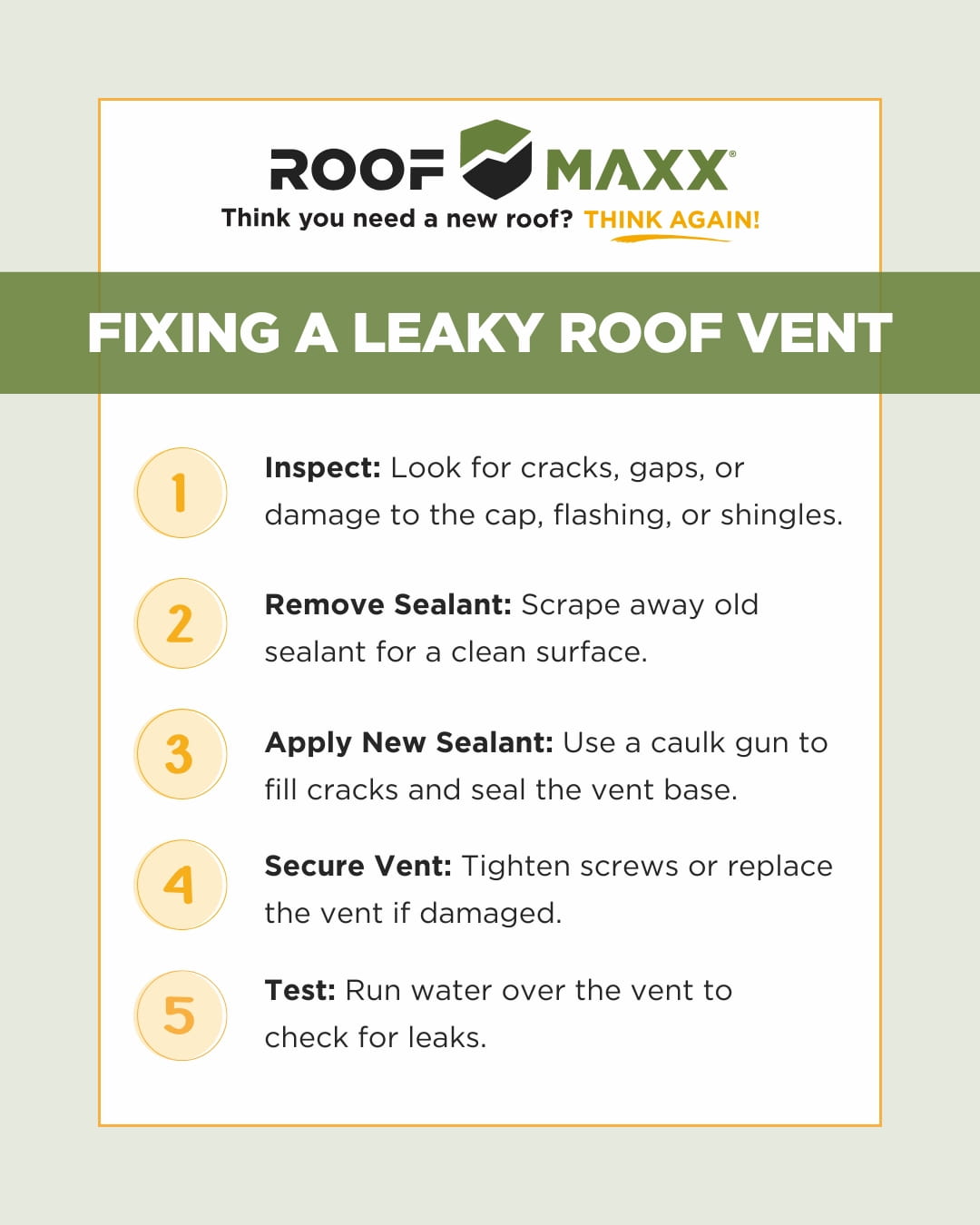
Follow these steps to repair your leaking roof vent:
Check for visible damage to the vent cap, flashing, or surrounding shingles. Take note of any cracks or gaps.
Carefully scrape away the old sealant using a utility knife. This ensures a clean surface for the new sealant to adhere to.
Use a caulk gun to apply a generous layer of roofing cement or sealant around the base of the vent. Make sure to cover any cracks or gaps.
Tighten or replace screws to secure the vent in place. If the vent itself is damaged, replace it with a new one.
Inspect the area to ensure all gaps are sealed and the vent is firmly secured. Test for leaks by running water over the vent with a hose.
Sometimes, weather conditions or immediate needs may require a temporary fix before you can perform a permanent repair. Here’s when to consider a temporary fix and how to apply it:
Temporary fixes can buy you time, but they’re not replacements for solving the problems that caused your vents to leak. As soon as conditions allow, remove the temporary fix and follow the steps outlined earlier to seal or replace the vent. Permanent repairs ensure your roof remains leak-free in the long term.
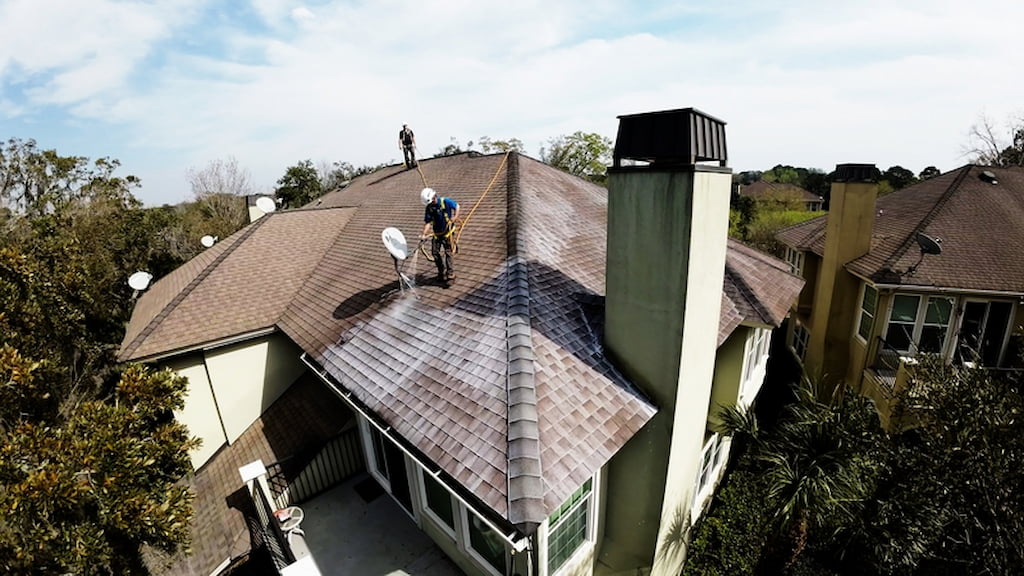
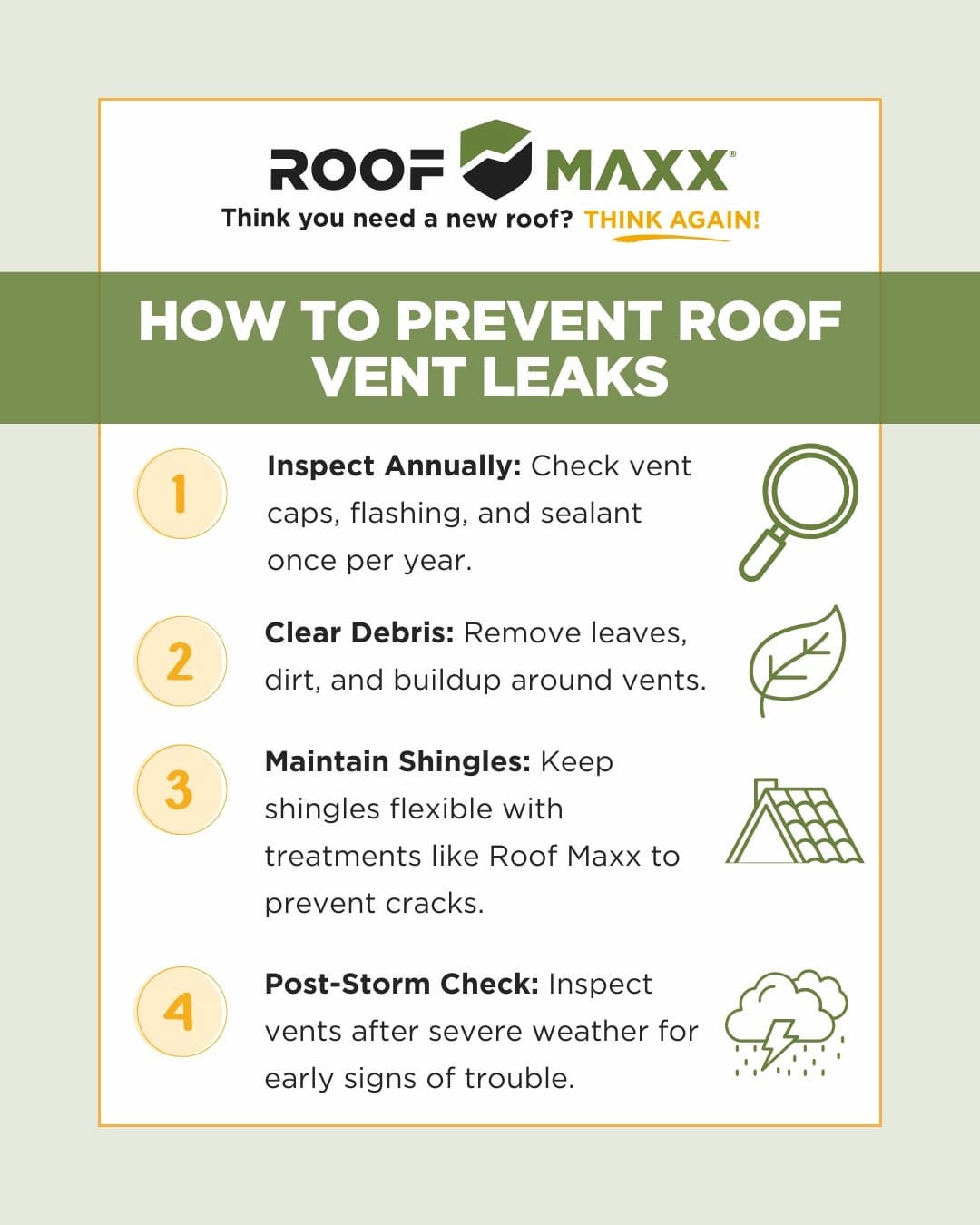
Regular maintenance can help prevent leaks from developing in the first place. Here’s what to include in your routine:
Learn More: Preventing vs. Fixing a Leaky Roof: Costs & Benefits
While many roof vent leaks can be fixed with a DIY approach, some situations call for professional assistance.
Consider hiring a professional roofer if:
A professional roofer has the expertise and tools to handle complex repairs and ensure your roof is in top condition.
Leaking roof vents can cause serious damage if left untreated, but addressing the problem quickly can save you time and money. By following the steps outlined in this guide, you can tackle most leaks yourself and take steps to prevent future issues. If the job feels too big or complicated, don’t hesitate to contact a professional roofer for help.
And remember—keeping your entire roof in good condition reduces your risk of water damage! Find a Roof Maxx dealer near you to learn more about how our treatments can help extend the lifespan of your asphalt shingle rooftop for up to 15 years, at a fraction of the cost of a total roof replacement.
With our five-year, transferable warranty, you’ll enjoy the peace of mind that your roof and entire home are protected.